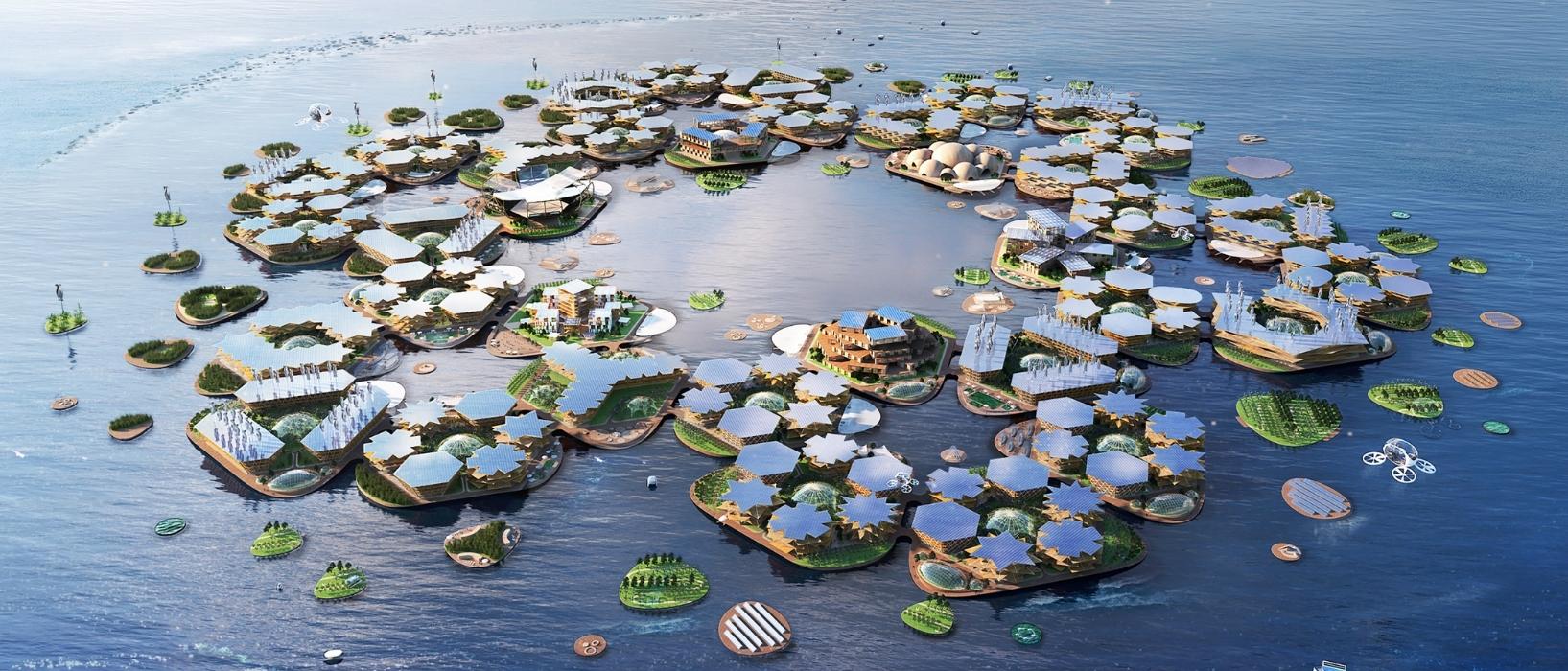Image Source: OCEANIX/BIG-Bjarke Ingels Group
The changing climate makes sea level rises a serious and dangerous threat, putting up to 760 million people living in coastal regions at risk. One South Korean city is hoping to ‘turn the tides’ with a new city, one that can sustain itself and floats on the sea.
The project, run by the Busan Metropolitan City and blue tech firm OCEANIX, was announced last year, but new design images have finally been revealed.
The floating city will be built off the coast of Busan over a stunning blue lagoon, formed of over 15 acres of interconnected platforms split into different neighbourhoods. This will include living, research, and lodging, all connected by bridges.
Initially, there will be enough space to accommodate 12,000 people, but in the future, it could be expanded to hold more than 100,000.
Construction is estimated to cost £150 million and is due to be completed in 2025.
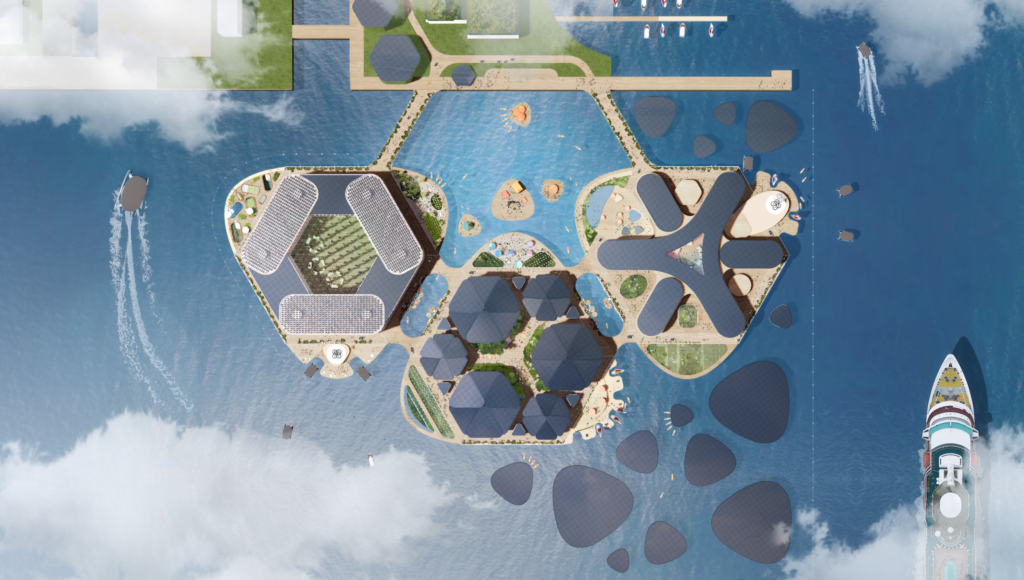
Image Source: OCEANIX/BIG-Bjarke Ingels Group
Busan is a port city which is already starting to bear the brunt of rising sea levels and increased rainfall. One area is even at risk of being submerged as early as 2030, the project’s team leader, Park Jaesung, explained.
These factors had to be taken into consideration during the planning. After all, you can’t build a city for the future without considering what the future will look like.
Be The Climate Solution
To account for worsening weather and increased storms, all built structures in the city will be kept below seven stories to resist the wind. Most importantly, however, is the entire city will be completely self-sustainable.
This means it will produce its own water, energy, and food, without any emissions or waste. While the plans aren’t finalised, this will likely be a mixture of solar as the primary source, along with wind, waves, and algae, according to Matteo Pietrobelli, Chief of Design and Engineering at OCEANIX.
Meanwhile, vertical farms will help generate the city’s food, and the method will allow them to eventually farm mussels, scallops, oysters, seaweed, and clams.
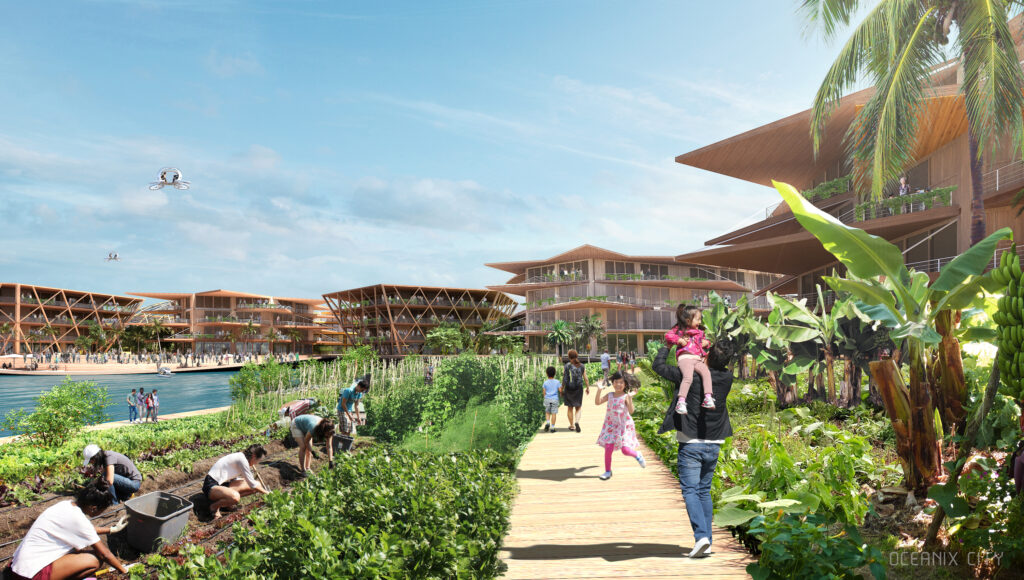
Image Source: OCEANIX/BIG-Bjarke Ingels Group
All wastewater that citizens generate will also be recycled and repurposed, so none is put out into the ocean. To do this, the floating city will adopt technologies already being used in other marine industries like cruise lines.
Other key features include greenhouses and six integrated systems – zero waste and circular systems, closed-loop water systems, food, net-zero energy, innovative mobility, and coastal habitat regeneration.
It’s worth mentioning that the city won’t be 100% self-reliant straight away, but the aim is to continue building and improving upon the design as the city grows.
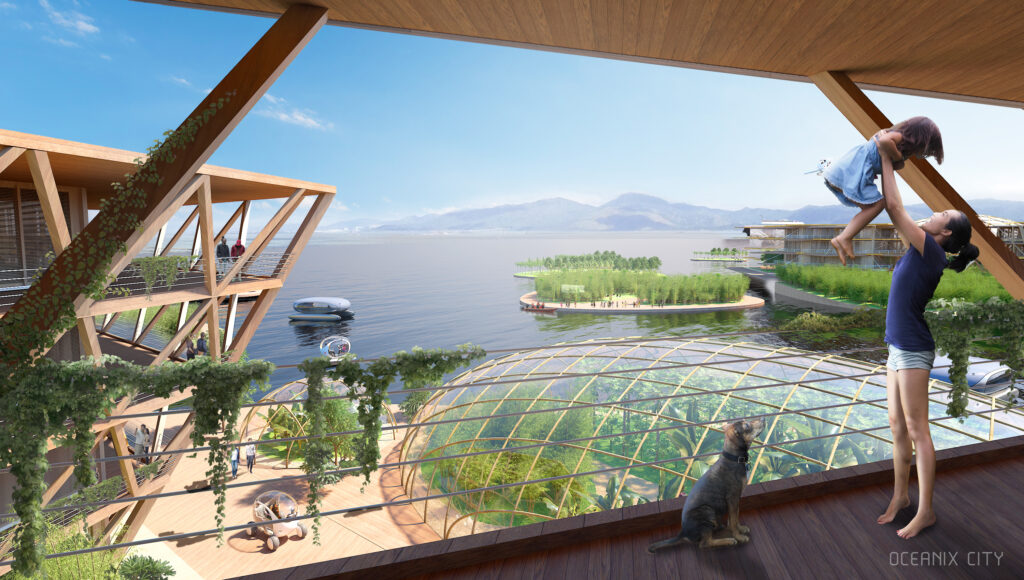
Image Source: OCEANIX/BIG-Bjarke Ingels Group
Building for the future doesn’t stop there. Madamombe shared that, unlike on land, these cities are highly configurable, with the platforms able to be unplugged from the seabed and moved if necessary.
“If it got down to it and there was a disaster in that area, you can unplug the whole city and move it elsewhere,” said Madamombe. “This reduces a lot of material use because you don’t need to demolish everything.”
Building a city from scratch means that “we can bring our best thinking to the process,” Madamombe notes. “Right now, with existing cities, you’re trying to retrofit to address mistakes that have already been made,” she says.
But by building something completely new, governments have the opportunity to develop new ways of living on the ocean and to solve problems before they even happen, she shares.
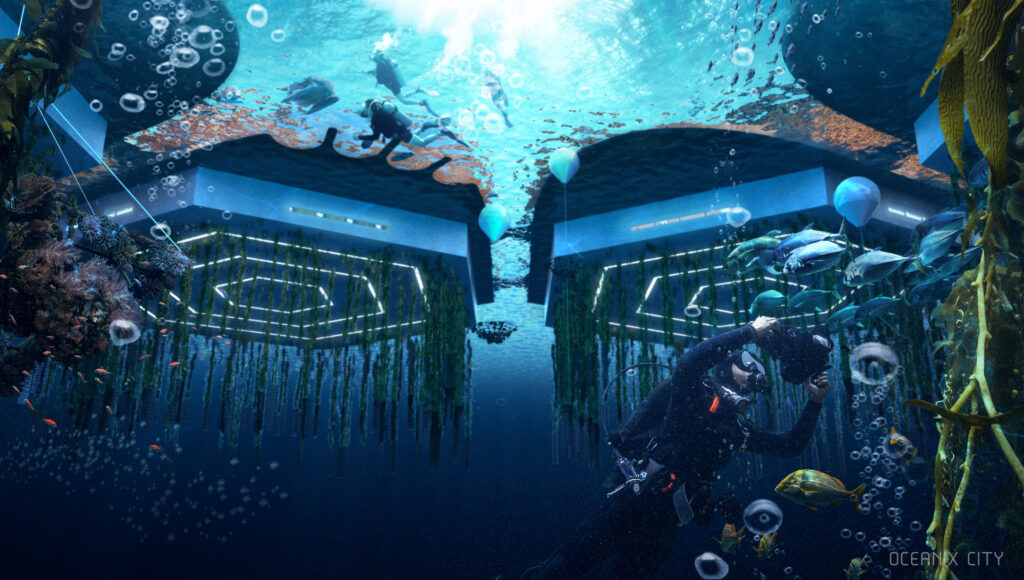
Image Source: OCEANIX/BIG-Bjarke Ingels Group
The problem-solving doesn’t even stop there. A major problem with our current ‘land cities’ is the need to take up more space by expanding. This is usually done by moving sand from one part of the ocean to another to raise the sea bed, harming the ocean in both of those places.
The floating city, on the other hand, will co-exist in harmony with life below water. OCEANIX will actually regenerate marine ecosystems using biotechnology, including biorock.
Biorocks create artificial reefs where corals can grow and thrive, which in turn will attract a diverse ecosystem. This will also link with ocean farming.
The beauty is that in this farming, we need zero inputs to grow the crops, which means no nutrients, no fertiliser, no freshwater,” Pietrobelli shared.
The crops used will also help keep the ocean clean and reduce carbon. For example, oysters can filter up to 50 gallons of water a day, while kelp can absorb up to five times more carbon than land-based plants.
As cities today continue to struggle with floods, storms, and rising sea levels, this new floating city could pave the way for a very different future, one where humanity lives on the seas. With construction set to begin in 2023, all eyes will be fixed on Busan’s coast to see what this future could bring.
Reach Net Zero
Find out how Play it Green can help your business


